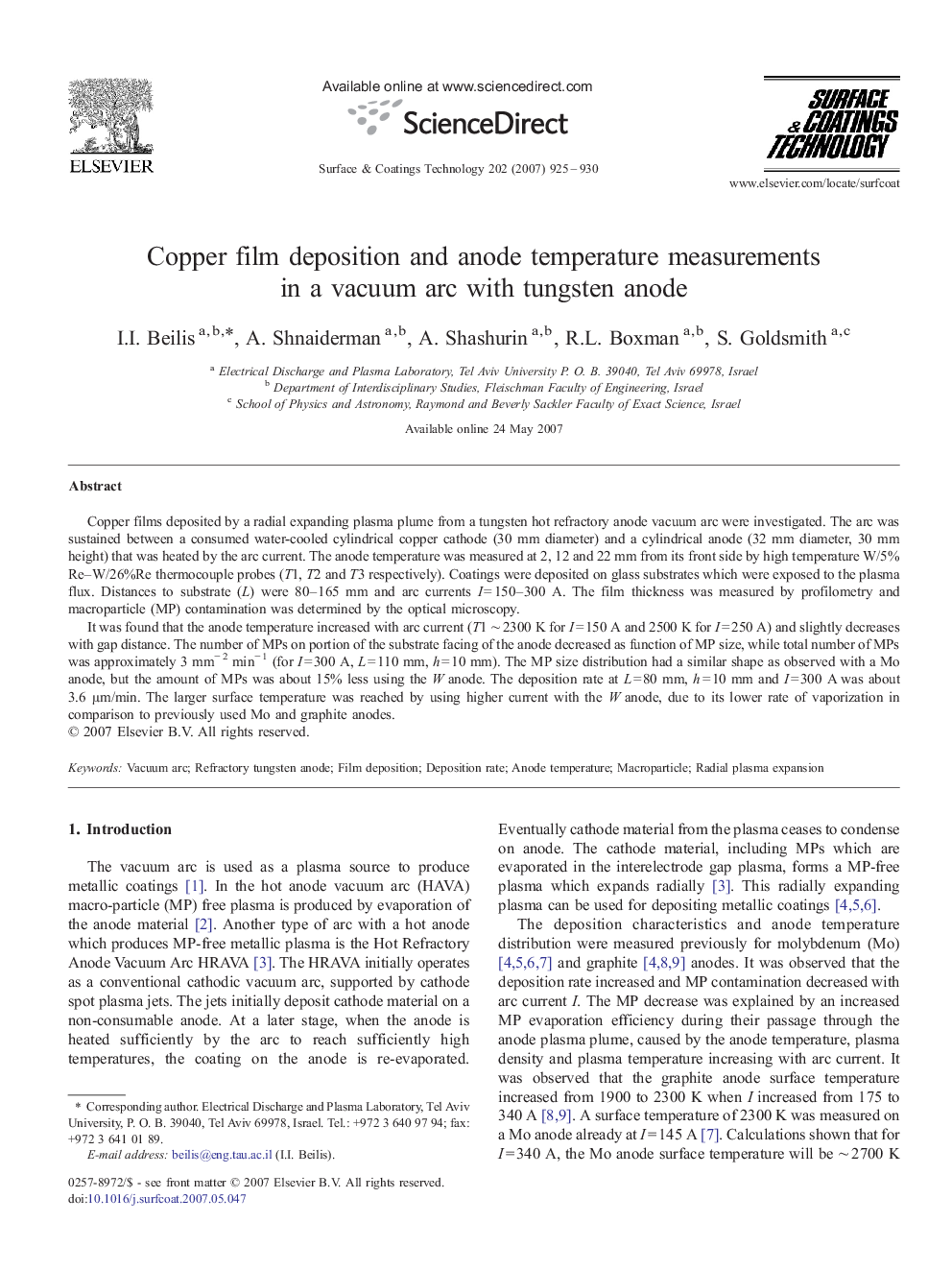| Article ID | Journal | Published Year | Pages | File Type |
|---|---|---|---|---|
| 1661689 | Surface and Coatings Technology | 2007 | 6 Pages |
Copper films deposited by a radial expanding plasma plume from a tungsten hot refractory anode vacuum arc were investigated. The arc was sustained between a consumed water-cooled cylindrical copper cathode (30 mm diameter) and a cylindrical anode (32 mm diameter, 30 mm height) that was heated by the arc current. The anode temperature was measured at 2, 12 and 22 mm from its front side by high temperature W/5%Re–W/26%Re thermocouple probes (T1, T2 and T3 respectively). Coatings were deposited on glass substrates which were exposed to the plasma flux. Distances to substrate (L) were 80–165 mm and arc currents I = 150–300 A. The film thickness was measured by profilometry and macroparticle (MP) contamination was determined by the optical microscopy.It was found that the anode temperature increased with arc current (T1 ∼ 2300 K for I = 150 A and 2500 K for I = 250 A) and slightly decreases with gap distance. The number of MPs on portion of the substrate facing of the anode decreased as function of MP size, while total number of MPs was approximately 3 mm− 2 min− 1 (for I = 300 A, L = 110 mm, h = 10 mm). The MP size distribution had a similar shape as observed with a Mo anode, but the amount of MPs was about 15% less using the W anode. The deposition rate at L = 80 mm, h = 10 mm and I = 300 A was about 3.6 μm/min. The larger surface temperature was reached by using higher current with the W anode, due to its lower rate of vaporization in comparison to previously used Mo and graphite anodes.
